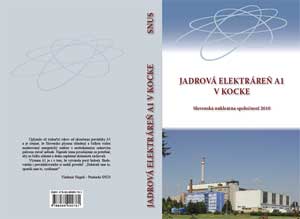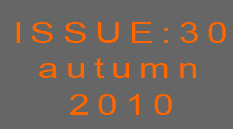
Word from the President

In November, a book about the first Czechoslovak nuclear reactor to be built was published. It is the work of the Slovak Nuclear Society (SNUS) and the result of years of research into the history of the so-called “A1 project,” from the original reactor design concept through to first criticality, its operating history and shut-down.

Why am I mentioning this book, which is written in Slovakian and, therefore, is readable by a relatively small Slovak and Czech nuclear community? The message is – when we seriously consider the nuclear renaissance, we should first know our history, learn about the first tentative steps that were taken. National nuclear societies are in fact capturing nuclear knowledge and competence and this book provides a positive example of their activities.
The ground-breaking 150 MW, CO2-cooled, heavy water moderated, gas-cooled Bohunice A1 reactor was developed in the late 1950s and first reached criticality in 1972. The project represented a big, bold step into the unknown. The principle of using natural uranium and doing away with expensive enrichment had never been tested before. Of course, as some of our older readers will remember, nuclear technology was in its infancy then and the A1 reactor suffered from a lot of technical setbacks and errors, based on understandable inexperience and a lack of modern computation models. How can you learn from the unknown? But these errors were ultimately to contribute to the project’s downfall. In the end, the nuclear community looked elsewhere, unconvinced that this reactor design option had a viable future. Looking at it today, it is easy to understand why, but it’s also easy to be wise after the event. Hindsight is a precious gift.
I’m sure that some readers can relate to what happened with the Bohunice A1 project. Research projects, like industrial projects, have their highs and lows and do not always follow the prescribed route – especially when knowledge and experience in a given area is limited. Success is never guaranteed. Funding can dry up and changing political objectives can alter the agenda. There can be great difficulties associated with any ambitious new project, some expected, others not. This is the reality that our friends at Bohunice encountered all those years ago. Even with the knowledge we have acquired today, unexpected problems still regularly occur. You can’t legislate for the unexpected, but to ignore the lessons of the past is unforgiveable. And that is the main message to be learnt from the story the book tells; the knowledge acquired from the past must be diligently transferred to the next generation of nuclear scientists, engineers and plant operators. Failure to do so is not an option. It’s about fundamental nuclear knowledge management. That knowledge, that substantial database of experience, must be a central part of the legacy passed on from generation to generation. If it is not passed on then we risk compromising the future. The errors that those involved in the Bohunice A1 project made were largely due to lack of knowledge and experience. With the knowledge we have amassed since then, we can’t so easily make the same excuse.
And this is where a knowledge-based nuclear society, like SNUS or ENS, can make a big difference; is making a big difference. The nuclear research community has a responsibility, one that it takes very seriously, to record, process and transfer that knowledge to current and future generations - just like SNUS has done in writing this book. By doing so, it is playing a crucial role in helping to ensure continuity and success for our industry in the future. This is part of the added value that ENS and its member societies have to offer. But we still have a lot more to do and the importance of this responsibility will never diminish.

Vladimir Slugen
President of ENS |

